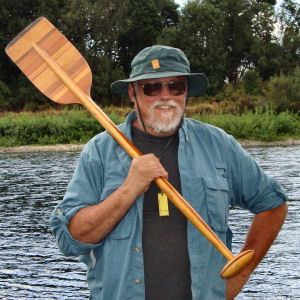Ken Bierly, Consultant and Volunteer

Ken Bierly first visited Harney County in the summer of 1958 when he was in middle school and living in Madras. “We visited another middle school teacher who spent summers on the Malheur Refuge taking nature pictures. I have vague recollections of a marshy expanse and have old faded images of swans, nighthawks and a myriad of ducks.”
Ken is a valuable partner with the Harney Basin Wetlands Collaborative and is also involved with the community based water planning effort. He has a love for Harney County that began on that first visit to Harney County in the late ‘50’s and continues today. “My experience in Harney County has been one of the highlights of my professional experience. I have met people from all walks of life that are working hard to maintain a meaningful way of life and to understand the options they have. The people that commit their time to addressing difficult problems with humor, seriousness and hard work are what makes the involvement of time and effort meaningful. I am stimulated by the opportunity to use the skills I have developed over the years in an area where people are trying very hard to address very difficult problems.”
Prior to retiring in 2013 Ken was “a private environmental consultant and and then moved into public employment with the Division of State Lands and became the Wetlands Program Manager. I was asked to join Governor Kitzhaber’s Natural Resource staff as the Governor’s Watershed Enhancement Board program manager in 1996 and was on his staff until 1999 when the Oregon Watershed Enhancement Board (OWEB) was created and became Deputy Director of OWEB.” Since Ken’s retirement in 2013 he hasn’t slowed down much. As shared previously, he keeps his connection to Harney County through his work with the Harney Basin Wetlands Initiative and the community based water planning effort.
When it comes to the collaborative efforts in Harney County, Ken participates because: “What the collaborative efforts in Harney County are achieving is the development of community-based tools and practice to solve complex and difficult problems. The local solutions approach has power that can’t come from Salem or Washington D.C. The creativity that is being tapped into from people that have their livelihoods on the line is becoming the norm. The efforts of the people in Harney County to find their own way to solve problems is an incredible example to others. If the collaborative efforts provide “fixes” to the problems faced it is great, but even if “fixes” are elusive the conversations about how the community reacts to stresses is important for the people involved. The leadership developed from these efforts by ranchers, farmers, local community members and elected officials shows a strength of community that is missing from many urban and suburban areas and can only serve Harney County well into the future.”

